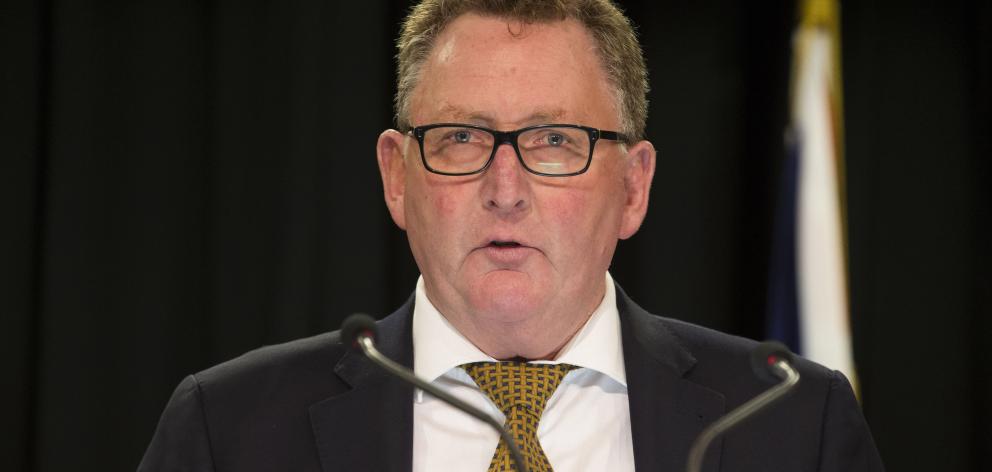
Adrian Orr is part Cook Islander and grew up in a largely Maori community in the central North Island, and since he took the helm of the Reserve Bank this year, phrases like tikanga Maori and te reo have begun to feature prominently on its priority list.
Mr Orr was the first of New Zealand’s central bankers to be welcomed with an official powhiri in March — fronted by the bank’s recently formed waiata group — and at his first press conference announcing the official cash rate in May he greeted journalists in English, Maori and sign language. Under his watch, the bank’s Statement of Intent, where it sets out its strategic objectives to the Government for the next four years, highlights its intent to embed te reo and tikanga Maori into the culture of the bank.
"This is the first time we have got it up in bold lights as part of one of our key priorities," Mr Orr explained.
"The reason we are embracing the wider tikanga Maori is simply that diversity and inclusiveness are a very, very key part of a successful organisation, and why not start with tangata whenua around thinking of diversity? At the very most basic level we have a clear obligation from the Treaty of Waitangi."
Mr Orr has been mulling over the place of New Zealand’s central bank in the country’s financial ecosystem for some time and wants to tell its story in a more holistic way. He sees the bank as Tane-mahuta, the tall, strong tree that separates Rangi-nui and Papa-tua-nuku, with the strong roots of its balance sheet and legislation giving it operational independence and with the money that it creates represented in the pure sap that flows through the tree. The big branches are the banks it supports with its sap.
There are many more metaphors which can be drawn out and a whole of bank working group, from the roots to the top of the tree, is looking at the Tane-mahuta example to see if it is a good fit for the central bank to communicate its story. Mr Orr says he would love it to be part of the bank’s branding in the future."It’s early days but it is resonating very strongly.
"That’s my personal passion. It’s something that I have been pushing hard."
Mr Orr says there was already a groundswell developing around diversity and inclusiveness in the bank when he joined, including the formation of the bank’s waiata group who performed at his powhiri, which he is hoping to champion further.
"You want that groundswell because if you shout from the top to be inclusive, well that doesn’t work does it?"
He notes these types of events are "nothing unique" to a government department in New Zealand, and says it was "about time" for the central bank. In fact, Te Puni Kokiri says powhiri and whakatau have been regular features for government departments over the past 25 years.
"I think we were lagging behind in some places," Mr Orr says.
"It’s not just tikanga Maori, it’s about accepting what future New Zealand looks like. It doesn’t look like current New Zealand. It’s going to be Polynesian, Asian, European, as opposed to European, Polynesian, Asian".
Mr Orr "disagrees completely" with former Reserve Bank governor Don Brash, who said late last year that he was "utterly sick" of the use of te reo on Radio New Zealand and that teaching te reo in schools had no value.
"My personal view is very different to that," Mr Orr said.
He says he knows "the tiniest bit of te reo" and has two "false starts" at Cook Island Maori, but "without a doubt" wants to learn more. He can, however, put down a mean hangi, he says.
The Reserve Bank already uses Maori names, features and icons in its work, and added the words Te Putea Matua — roughly translated as Father of the Cash — to its latest bank notes, as well as Aotearoa alongside New Zealand. The notes also feature Maori names of native birds and Maori art.
However, Mr Orr says Maori linkages have been sporadic in the past, and he wants a more holistic approach and a broadening of the tikanga Maori strategy as part of a far bigger cultural embraceStill, he says he has "no shame" about the history of the bank.
"It is what it is, it’s a proud history, but it can be even prouder if we become more inclusive."
The Maori economy is "huge" and the bank needs to have a good handle on Maori enterprises to understand what is happening in the country and ensure the financial system is efficient for all players when setting policy, Mr Orr said.
He notes some 20% of the future working-age population are going to be Maori and Pacific Islanders, so the bank needs to remain relevant to attract, retain and motivate that future population.
"You want to create relevance, you want to create the ability to have a two-way sharing of ideas rather than us sitting here, patting the white cat in the ivory tower and looking out the door."
Still, Mr Orr rejects the idea that the bank had previously had an ivory tower mentality.
"I would say that we have been very poor at winning hearts and minds externally," he says.
"If you look across the vast majority of our documents, we are writing for other people that look like us, other economists, other central bankers, we are struggling to be able to communicate to the wider public.
"I believe we have sold ourselves short in this whole space. This institution is a diamond but it needs polishing. It needs to better articulate itself, it needs to understand how and why it exists together, and it needs to speak with people not at people and become open."
He is encouraging a 20-year vision of what the future Reserve Bank "island" would look like — the long-term direction of the central bank.
"I know in my career here we will never reach the island, who knows if they ever will, but at least people will be paddling in the right direction."
— Tina Morrison











